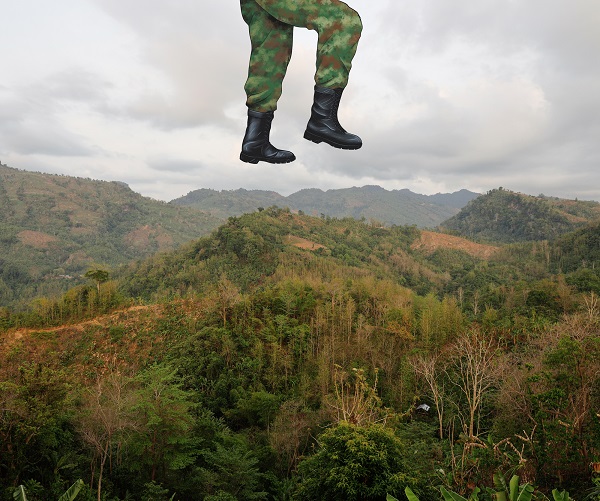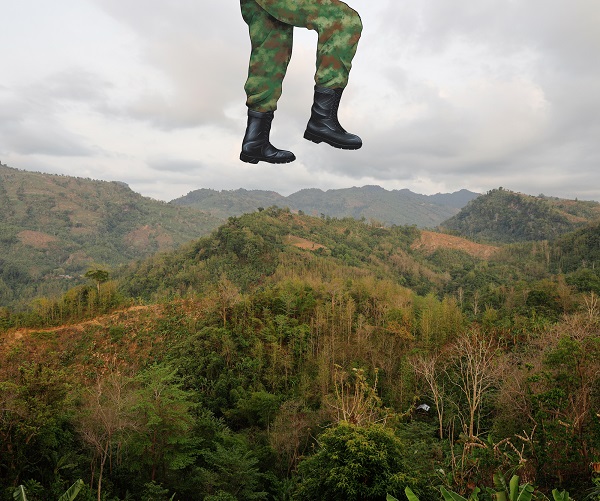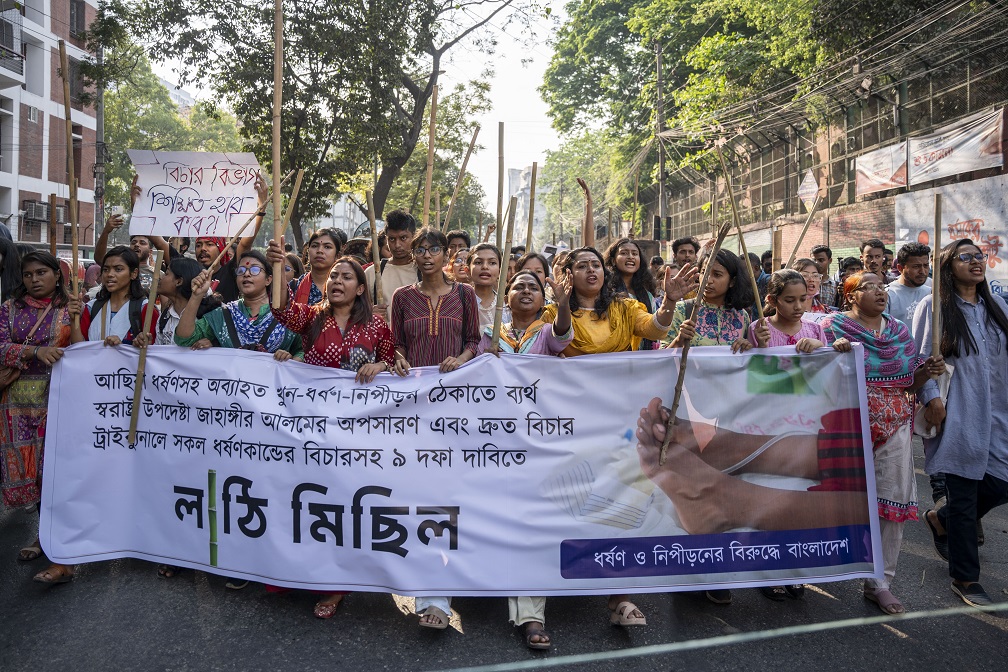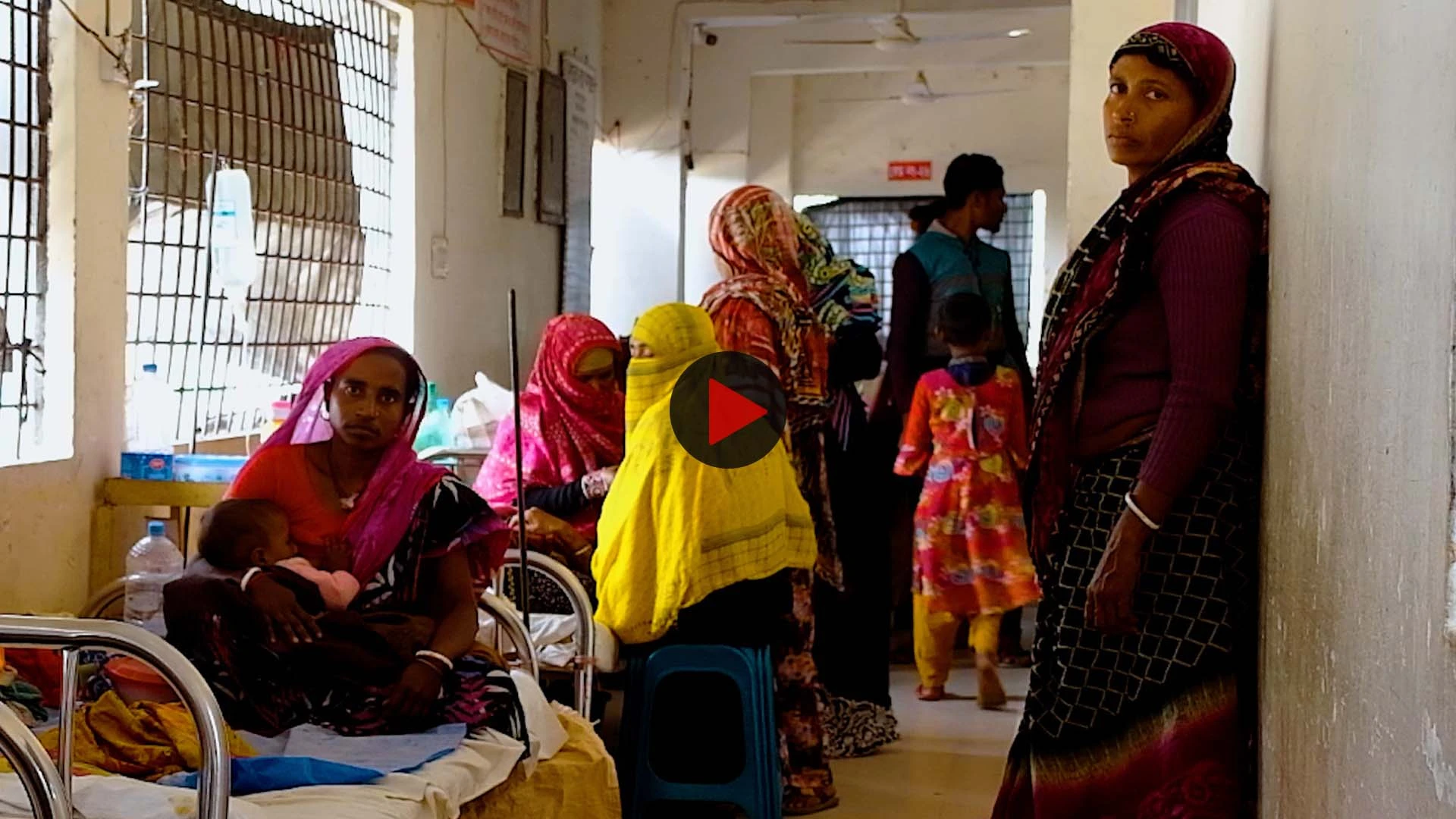Living Under Militarisation: Portrayal of Systemic Erasure of Indigenous in CHT
২০২৫-০৫-২৬
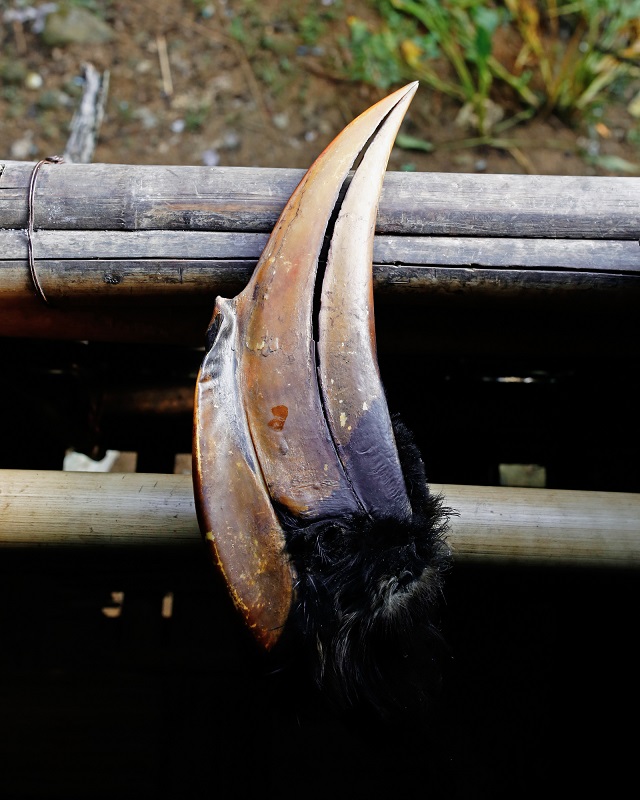
A waned bill which was once vibrant with shades of yellow ochre, orange, and hints of red, is caught between in what appears to be a bamboo fence, appears as of the subjects featured in Denim Chakma’s photo story, Living Under Militarisation, displayed on the 8th floor of DrikPath Bhobon in Dhaka. Organised by Drik Picture Library as part of the 4th Bangladesh Press Photo Contest (BPPC) 2025, the exhibition showcased momentous events from 2024 in Bangladesh through various photo stories. The exhibition raised its curtains on Saturday, April 19, 2025, at 6:00 PM and ran until Saturday, May 17, 2025.
The Great Hornbill, colloquially termed as ‘Dhanesh Pakhi’ and ‘Rongrang’ in Bengali and indigenous languages, respectively, has integral significance in indigenous cultures stretching from the Chittagong Hill Tracts (CHT) in Bangladesh to Northeast Indian states and Southeast Asian countries, and is almost on the verge of extinction. ‘This picture of the demised Great Hornbill’s beak symbolises the ongoing erasure of Adivasis, currently the Bawm people living in CHT, by military occupation, remarks last year’s Indigenous Community Grant winner Denim Chakma, reflecting upon his work. The endangerment of this very revered bird species due to habitat loss, which again relates to the unjust settlement’s deforestation enterprise highlighted in the image informs of the environmental aspects most often neglected in discussions of political philosophy amongst the masses.
Adivasi Photographer Denim Chakma’s overall photo story recounts the militarisation’s planned afflictions brought upon the indigenous Bawm peoples. The gut-wrenching accounts of brutality in the hill tracts. Wherein an image of woman holding a passport-sized picture of her deceased son- ‘deceased’, such a word being associated with her son is not unbeknownst to her, who is still in the knowledge of her son’s ‘missing’ status. Another image shows that a tiny hut being circumscribed by the army on the twilight of a random day on the hills portraying an ominous sentiment which ultimately poses the question of state-sponsored occupation in the name of protection from so-called terrorism.
On April 2, 2024, a bank robbery carried out by thugs from the Kuki-Chin National Front (KNF) occurred in Ruma and Thanchi, Bandarban. Following this incident, the Indigenous Bawm community faced severe oppression under the guise of a ‘joint operation’ by state security forces. Innocent individuals, including women, pregnant women, children, students, and the elderly, became victims of arbitrary arrests, torture, and the starvation of children. Citizens of the Bawm community claimed that they are being falsely accused. For over a year, innocent individuals from the Bawm ethnicity have been imprisoned based on false charges due to the actions of a few KNF members and other wrongdoers.
The Bangladesh Armed Forces media wing, ISPR, announced that they are conducting operations against KNF terrorists in the hill tracts. This has raised a significant question of the community: Does this mean that the entire Bawm community is being labeled as terrorists? This concern has been echoed by various indigenous groups, civil and human rights organizations, as well as the international community. The state must address these questions.
‘Adivasis don’t often come across platforms to raise these issues, and I’m thankful to Drik for the grant, ’ says Denim Chakma on note of winning the Indigenous Community Grant in 2024. This year's grant winner from the Garo community, Jajong Nokrek, will have their work exhibited in BPPC 2026, showcasing the stories, cultures, struggles, and livelihood of the Garo communities


